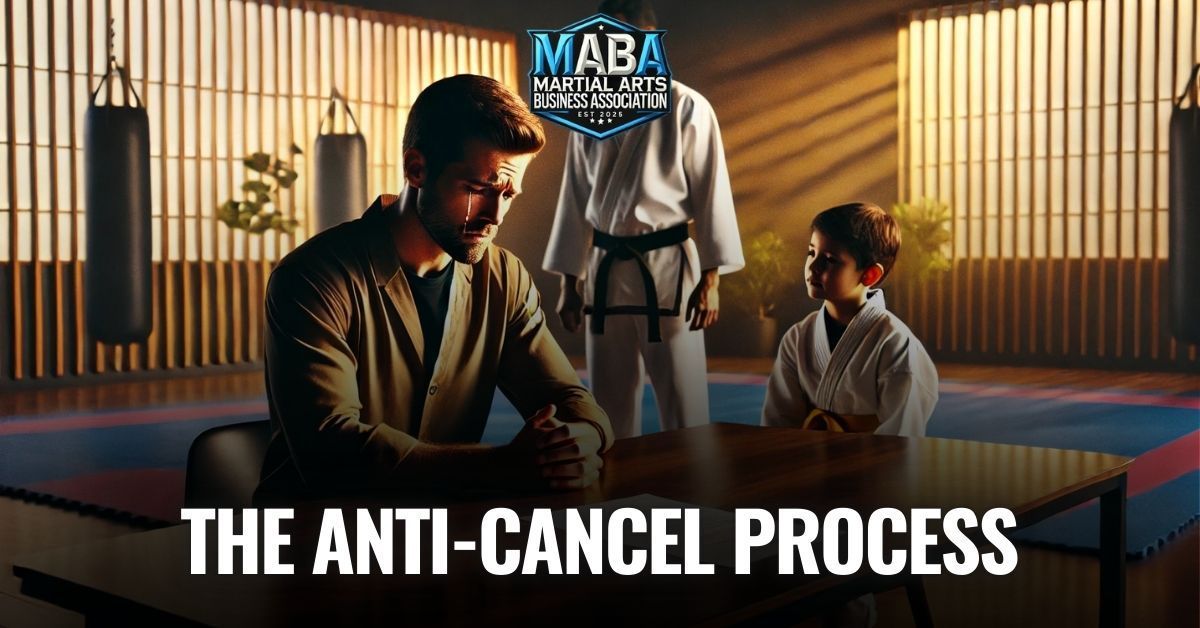If you're looking for a way to stand out in the crowded market, to create a loyal fan base, and to make a lasting impact, then you need to think beyond the conventional business model. You need to think about building a movement.
A movement is not just a marketing strategy or a gimmick. It's a way of creating a community that shares your beliefs, values, and vision for the future. It's a way of transforming your customers into advocates who don't just buy from you, but belong with you.
But how do you build a movement with your business? How do you ignite a revolution that resonates with your audience and changes lives?
In this guide, we'll show you the essential steps to building a movement with your business, based on the insights and experiences of two successful entrepreneurs: George Bryant and Nick D.
George Bryant is the founder of Civilized Caveman, a movement that helps people live healthier and happier lives through paleo recipes, coaching, and personal development. Nick D is the founder of Winterbourne, a martial arts marketing agency that empowers people to achieve their goals through discipline, respect, and perseverance.
Both George and Nick have built movements that are more than just businesses. They are communities that inspire, support, and grow together. And they are here to share their secrets with you.
Step 1: Be More Than Just a Business
The first step to building a movement is to realize that your business is more than just a product or a service. It's a philosophy, a way of life, that can profoundly impact individuals.
Your business should embody a core principle that guides everything you do, from the way you teach, to the way you communicate, to the way you treat your customers.
For example, Nick's martial arts studio is not just a place to learn self-defense or get fit. It's a place where people learn how to overcome challenges, develop confidence, and become leaders. His core principle is that martial arts is a tool for personal growth and community cohesion.
Similarly, George's Civilized Caveman is not just a website that offers paleo recipes and coaching. It's a website that helps people discover their true potential, heal their relationship with food, and live authentically. His core principle is that health and happiness are the result of being honest, vulnerable, and compassionate.
By embracing and expressing your core principle, you create a foundation for your movement. You show your audience that you're not just selling something, but offering a path to transformation that aligns with their values and aspirations.
Step 2: Be Unapologetically Authentic
The second step to building a movement is to be unapologetically authentic. Authenticity is the currency of movements. It's what attracts like-minded individuals, builds trust, and creates loyalty.
Your audience seeks genuine experiences and can easily discern when something lacks sincerity. They want to connect with you on a human level, not just on a transactional level.
That's why you need to share your journey, including both your struggles and your triumphs. You need to create a narrative that is relatable and engaging. You need to show your audience that you're not just a business owner, but a person who has a story to tell.
For example, George often shares the story of how he went from being 80 pounds overweight to getting back in shape. He doesn't sugarcoat the challenges he faced, such as binge eating, depression, and addiction. He also doesn't shy away from the lessons he learned, such as finding discipline, commitment, and self-love. His story resonates with his audience because it's real, raw, and relatable.
Similarly, Nick often shares the story of how he started his martial arts studio from scratch, with no experience, no money, and no support. He doesn't hide the obstacles he overcame, such as doubters, competitors, and failures. He also doesn't downplay the achievements he accomplished, such as building a loyal fan base, winning awards, and making a difference. His story inspires his audience because it's honest, humble, and heroic.
By being unapologetically authentic, you humanize your brand and strengthen the bond with your audience. You make your business a beacon of trust and reliability.
Step 3: Be a Storyteller, Not a Salesperson
The third step to building a movement is to be a storyteller, not a salesperson. Storytelling is your secret weapon for conveying your beliefs and values, and for showcasing the impact of your business.
Stories are not just anecdotes; they are powerful tools that can influence emotions, opinions, and actions. They can make your audience remember you, relate to you, and follow you.
That's why you need to use stories to highlight not only the physical achievements, but also the emotional and psychological growth of your customers. You need to share narratives of transformation that demonstrate the life-changing potential of your business.
For example, Nick uses stories to showcase how his martial arts studio has helped his students overcome bullying, gain confidence, and achieve their goals. He shares stories of how his students have grown from shy and timid to strong and assertive, from fearful and insecure to courageous and confident, from passive and complacent to active and ambitious.
Similarly, George uses stories to showcase how his Civilized Caveman has helped his customers heal their relationship with food, improve their health, and live happier lives. He shares stories of how his customers have gone from being overweight and unhappy to fit and joyful, from being addicted and unhealthy to free and vibrant, from being stressed and depressed to calm and fulfilled.
By being a storyteller, not a salesperson, you create a compelling case for your business. You show your audience the benefits of joining your movement, not just the features of your product or service.
Step 4: Be a Leader, Not a Seller
The fourth step to building a movement is to be a leader, not a seller. Leadership is the essence of movements. It's what compels people to join you, not because they were convinced, but because they were inspired.
Your business should not be about selling; it should be about leading. It should be about showing people a path to transformation that aligns with their values and beliefs. It should be about making a genuine difference in the lives of your customers.
That's why you need to focus on creating value that transcends the transaction. You need to engage with your community, listen to their stories, and provide support and guidance. You need to celebrate their achievements, acknowledge their challenges, and offer solutions and resources.
For example, Nick focuses on creating value that goes beyond the physical training. He offers workshops, seminars, and events that teach his students life skills, such as goal-setting, time management, and communication. He also partners with local schools, businesses, and organizations to spread his message and engage with a broader audience.
Similarly, George focuses on creating value that goes beyond the paleo recipes and coaching. He offers podcasts, books, and courses that teach his customers personal development, such as mindset, habits, and happiness. He also collaborates with other influencers, experts, and brands to share his message and reach a wider audience.
By being a leader, not a seller, you transform your business into a catalyst for personal growth and community cohesion. You make your business a source of inspiration, support, and growth.
Step 5: Be Adaptable, Not Rigid
The fifth and final step to building a movement is to be adaptable, not rigid. Adaptability is the key to sustainability. It's what ensures that your movement remains relevant and impactful in a changing world.
Your business should not be static; it should be dynamic. It should be responsive to the feedback, needs, and aspirations of your customers and community. It should be willing to evolve and improve your strategies, products, and services.
That's why you need to constantly learn and adapt. You need to listen to feedback from your customers and community, and be open to change. You need to test new ideas, measure results, and optimize your performance. You need to embrace challenges, learn from failures, and celebrate successes.
For example, Nick constantly learns and adapts to the changing needs and preferences of his students and community. He experiments with new teaching methods, curricula, and programs. He surveys his students, tracks their progress, and adjusts his approach. He faces difficulties, learns from mistakes, and celebrates wins.
Similarly, George constantly learns and adapts to the changing trends and demands of his customers and community. He tries new recipes, products, and platforms. He asks his customers, monitors their feedback, and modifies his offerings. He encounters setbacks, learns from errors, and celebrates victories.
By being adaptable, not rigid, you ensure that your movement stays fresh and relevant. You make your business a source of innovation, excellence, and value.
The Big Push, The Time is Now
Building a movement with your business is not a quick or easy process. It requires passion, dedication, and a deep understanding of the values that drive your customers and community. It requires authenticity, storytelling, and leadership. It requires learning, adaptation, and improvement.
But the rewards are worth it. By building a movement with your business, you create not just a successful business, but
a transformative movement. A movement that resonates deeply with your audience, that changes lives for the better, and that leaves a lasting impact on the world.
So, what are you waiting for? The time is now. Start by taking a moment to reflect on your business. What is your core principle? What are your beliefs and values? How can you share them more openly with the world?
Remember, the most powerful movements are built on authenticity, integrity, and a genuine desire to make a difference. Be the one who leads the way, not the one who follows the crowd. Be the one who creates change, not the one who waits for it to happen.
Be like George, be adaptable and open-minded. Embrace challenges, learn from mistakes, and celebrate wins. And most importantly, start building your movement today. Your customers and community are waiting for you to make a difference in their lives. So go ahead, take the big push, and let your business be a force for good in the world.
The time is now.
Let's build a movement together.




